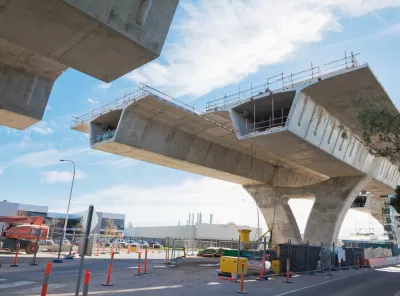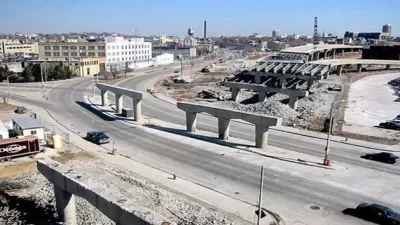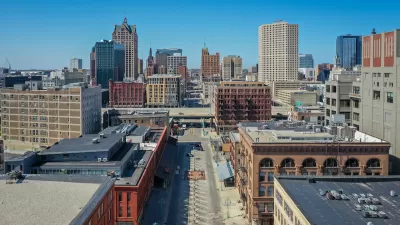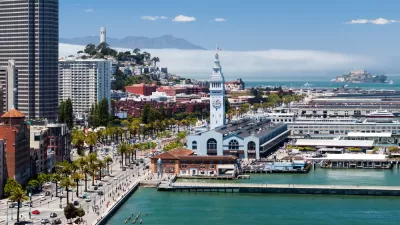Communities divided by freeways for decades are now looking to reconnect, and the U.S. Department of Transportation is stepping in to offer support.

The pendulum on new highway construction seems to be swing backwards now as more cities look to tear down, bury or bridge over existing freeways that have divided communities for years. Pete Bigelow of Car and Driver writes that the movement to break down the physical barriers caused by the interstate freeway system cutting through cities has gained strong support from U.S. Department of Transportation Secretary Anthony Foxx. Last month, the Dept. of Transportation launched the Every Place Counts design challenge, with the goal of finding creative solutions to stitch back together neighborhoods and communities divided by highways in cities around the country. Foxx and his team toured Philadelphia, Nashville, Spokane, and Minneapolis and spoke with locals about potential solutions.
Unlike the Smart City Challenge, a recent DOT competition that ultimately awarded $40 million in federal funds to Columbus, Ohio, to implement an innovative network of connected transportation options, there’s no funding attached to the Every Place Counts challenge. At this stage, the support is only in technical planning, though transportation officials say they’ll help communities pursue funds for implementation.
But both competitions highlight the way federal officials are examining transportation’s role in revitalizing urban cores and helping some of the country’s poorest residents gain access to health care, education, public spaces, and better jobs. In the case of Every Place Counts, the program is analyzing how transportation contributed to these problems in the first place.
As Bigelow notes, the idea of freeway removal is still relatively new, with opponents expressing fears of gridlock and suffering business. However, as case studies in Portland, Milwaukee, and San Francisco have shown, these fears are largely unfounded.
FULL STORY: The Future of Neighborhoods: Removing Urban Freeways Gains Fresh Traction

Alabama: Trump Terminates Settlements for Black Communities Harmed By Raw Sewage
Trump deemed the landmark civil rights agreement “illegal DEI and environmental justice policy.”

Planetizen Federal Action Tracker
A weekly monitor of how Trump’s orders and actions are impacting planners and planning in America.

Why Should We Subsidize Public Transportation?
Many public transit agencies face financial stress due to rising costs, declining fare revenue, and declining subsidies. Transit advocates must provide a strong business case for increasing public transit funding.

Understanding Road Diets
An explainer from Momentum highlights the advantages of reducing vehicle lanes in favor of more bike, transit, and pedestrian infrastructure.

New California Law Regulates Warehouse Pollution
A new law tightens building and emissions regulations for large distribution warehouses to mitigate air pollution and traffic in surrounding communities.

Phoenix Announces Opening Date for Light Rail Extension
The South Central extension will connect South Phoenix to downtown and other major hubs starting on June 7.
Urban Design for Planners 1: Software Tools
This six-course series explores essential urban design concepts using open source software and equips planners with the tools they need to participate fully in the urban design process.
Planning for Universal Design
Learn the tools for implementing Universal Design in planning regulations.
Caltrans
Smith Gee Studio
Institute for Housing and Urban Development Studies (IHS)
City of Grandview
Harvard GSD Executive Education
Toledo-Lucas County Plan Commissions
Salt Lake City
NYU Wagner Graduate School of Public Service





























